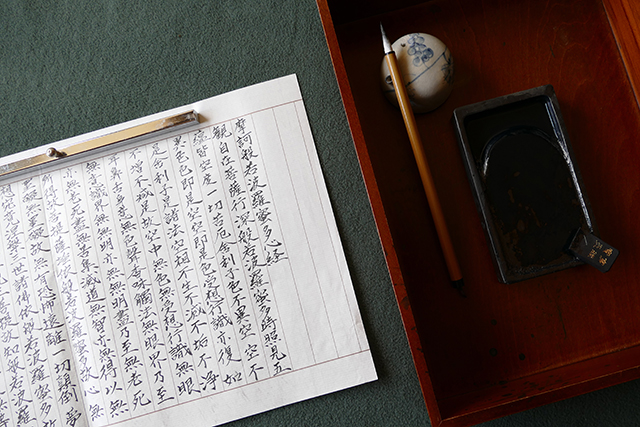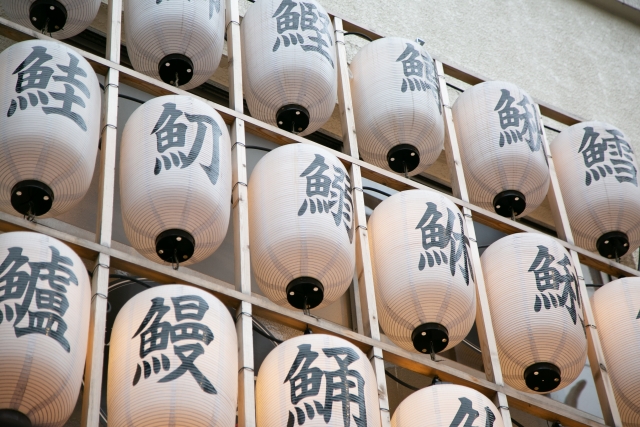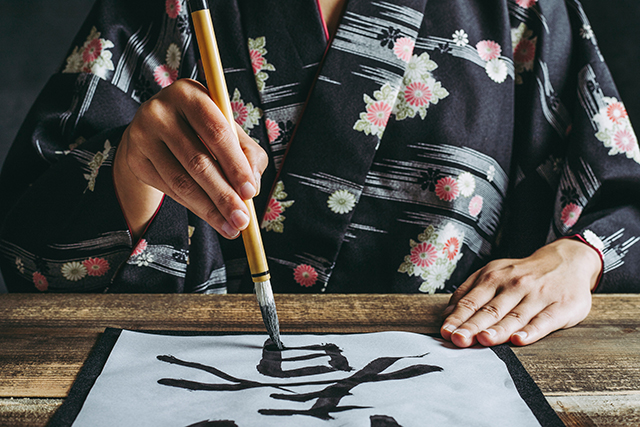- Learning Japanese
- Japanese Culture
The History of Kanji and the Fundamentals of Kanji Learning
2025.02.11

Introduction
Why Is Kanji So Fascinating and Essential for Learning Japanese?
Kanji is more than just a writing system—it is a fundamental part of Japanese language and culture. With a history spanning thousands of years, kanji offers a unique blend of visual beauty and intricate design, making it an engaging and rewarding subject of study. Rooted in a rich tradition of calligraphy, kanji has a depth that extends beyond mere symbols; it enriches Japanese vocabulary and expressions, serving as a key to understanding the deeper layers of Japanese language and culture.
However, the appeal of kanji is proportional to its complexity. Each character carries multiple meanings and pronunciations, and the sheer volume of kanji that must be memorized can feel overwhelming for many learners. Despite these challenges, mastering kanji is an unavoidable and crucial step in learning Japanese.
Challenges of Kanji Learning in the Modern Era
Today's Japanese learning environment is filled with abundant resources, providing learners with access to countless tools, such as apps, websites, books, and flashcards. While this is a great advantage, having too many options can also lead to confusion. Many learners struggle to decide which method or resource to follow, often losing sight of the fundamentals.
While kanji learning tools and platforms are undeniably useful, effectively utilizing them requires an understanding of the core principles of kanji learning. Without a solid foundation, even the best tools may not yield the desired results. By grasping the essentials, learners can maximize their efficiency and effectiveness, regardless of the resources they choose.
Purpose of This Guide
This article aims to provide a comprehensive approach to kanji learning, starting with a historical exploration of kanji—its origins and integration into Japanese language and culture. Understanding the background of kanji can serve as a powerful motivator for learners.
Next, this guide will introduce practical strategies for efficient kanji acquisition, including memory techniques, real-world application methods, and how to choose effective study tools.
By following this guide, learners will be able to identify the most effective kanji study methods, making kanji learning both enjoyable and efficient. This guide is designed to support learners in developing a structured and productive approach to mastering kanji.
The History of Kanji

The Birth of Kanji
Kanji originated in ancient China, with its roots tracing back to the pre-Christian era. Archaeological findings suggest that the earliest form of kanji can be found in oracle bone inscriptions (甲骨文字), which were used for recording divinations.
These early characters functioned as logographic symbols, representing objects and concepts visually rather than phonetically. This distinctive feature allowed kanji to convey meaning through visual representation, making it fundamentally different from purely phonetic writing systems.
As Chinese civilization developed, kanji evolved into a more sophisticated system capable of expressing complex ideas and abstract concepts. This remarkable expressive power eventually influenced neighboring countries, including Japan.
The Introduction of Kanji to Japan
Kanji was introduced to Japan around the 5th century, when Chinese logographic characters made their way across the sea. Initially, kanji was exclusively used by Japan’s elite class, particularly by government officials and Buddhist monks.
The reason for this was that kanji was extremely difficult to learn, and at the time, only those with high social status, financial means, and access to advanced education could dedicate the time necessary to study it.
Most people in Japan at the time were farmers, and there were no public education systems that provided common people with access to higher learning, including kanji. As a result, the adoption and adaptation of kanji in Japan was not a simple process.
Interestingly, while modern Chinese characters have undergone significant simplifications, Japan has retained many of the traditional forms of kanji. Similarly, Taiwan also continues to use character forms that closely resemble Japan’s, highlighting the regional differences in kanji usage across East Asia.
The Evolution of Kanji in Japan

The process of incorporating kanji into the Japanese language came with numerous challenges.
Grammatical Differences
Because the grammatical structures of Chinese and Japanese are fundamentally different, kanji could not simply be applied to Japanese as-is.
For example, word order and verb conjugation differ significantly between the two languages, making a direct, one-to-one correspondence between Chinese characters and Japanese words impossible. This structural gap made the adaptation of kanji into Japanese even more complex.
The Pronunciation Barrier
While kanji came with Chinese pronunciations (on’yomi), it needed to be integrated into the existing Japanese language. To do this, the characters were paired with kun’yomi, which were native Japanese readings corresponding to words that already existed in the language.
Through this process, kanji retained its visual meaning while being linked to Japanese vocabulary. Additionally, multiple kanji were combined to form new Sino-Japanese words (漢語), expanding the language's expressive potential.
As a result, one kanji often has multiple readings, a phenomenon that is unique to Japanese.
Japan’s Innovative Solutions to Kanji

To overcome these challenges, Japan developed several innovative solutions that laid the foundation for its modern writing system.
The Creation of Hiragana
Hiragana, a simplified syllabary derived from kanji, allowed for greater flexibility in writing native Japanese words.
It was developed primarily by noblewomen of the Heian aristocracy, who sought a more fluid and elegant script to replace formal kanji in daily writing. These women actively used hiragana for composing waka poetry and literary works, marking the birth of a wide variety of new literary tradition.
Although hiragana initially thrived in women’s literature, it was eventually embraced by male writers as well, contributing to the overall evolution of Japanese literature.
The Invention of Katakana
Katakana originated as annotations for reading Buddhist scriptures around the same time Hiragana was invented. Around the early Heian period (9th century), monks and scholars abbreviated parts of classical Chinese texts, creating a simplified phonetic system to facilitate reading.
Though initially used for religious purposes, katakana gradually spread throughout the Japanese language. Over time, it became a specialized script for foreign loanwords and emphasis, gaining widespread acceptance.
The Establishment of a Unique Writing System
By combining kanji, hiragana, and katakana, Japan developed a practical and adaptable writing system that accommodated the complexity of Japanese grammar and sentence structure. This unique approach has allowed the Japanese language to achieve both linguistic and visual richness, making it one of the most distinct writing systems in the world.
The Fundamentals of Kanji Learning

To efficiently master kanji, it is essential to understand the fundamental principles of kanji learning and apply them strategically in your study plan.
Below, we will explore key points to consider when beginning kanji study, along with the reasons behind their importance.
Master Hiragana and Katakana First
The first step in learning kanji is to fully master hiragana and katakana.
Reason
Japanese writing consists of a combination of hiragana, katakana, and kanji. Without the ability to use all three, it is impossible to read or write practical Japanese.
To properly read and write kanji in real contexts, learners must understand how kanji interacts with hiragana and katakana in natural sentences from the very beginning. This ensures that practical Japanese learning begins from day one, maximizing efficiency and effectiveness.
Additionally, hiragana and katakana are the fundamental phonetic systems of Japanese. By mastering them, kanji learning becomes significantly easier. For example, even if you do not know the reading of a kanji, you can still write or read it using hiragana as a substitute, allowing you to continue progressing in your Japanese studies with confidence.
Example
For instance, the kanji 「日」 has multiple readings, which change depending on the context:
- 「今日は良い日です。」 (hi) → Here, 「日」 means "day" or "one day."
- 「毎日勉強しています。」 (nichi) → In this case, 「日」 means "every day."
- 「日本に行きたいです。」 (ni) → 「日」 is part of the country's name and is read as Nihon or Nippon.
- 「先日はありがとうございました。」 (jitsu) → Here, 「日」 refers to "a few days ago."
As seen in these examples, the meaning and pronunciation of kanji depend on the surrounding words. To accurately learn kanji readings and meanings, it is essential to study them in real contexts where they are naturally combined with hiragana.
Kanji: A Logographic Writing System
Kanji is fundamentally different from the Western alphabet, as it follows a logographic writing system rather than a phonetic one.
Key Concept
- Kanji functions as symbols that represent meaning, rather than sounds.
- In Western languages, letters are combined to form words, whereas kanji is constructed using "radicals" (部首), which visually represent concepts. These radicals are combined to create kanji characters, which in turn form words that convey meaning.
Example
- The kanji 「休」 is composed of 「人」 (person) and 「木」 (tree), symbolizing the idea of "a person resting beside a tree."
- By understanding radicals, learners can often infer the meaning of unfamiliar kanji.
Recognizing this structural nature of kanji makes it easier to grasp the overall system of kanji learning and approach it with a strategic mindset.
Connecting Kanji Forms to Their Original Meanings
Relating the visual structure of kanji to its meaning is key to improving memory retention.
Reason
Many kanji originate from pictographs (象形文字) and ideographs (指事文字), which visually represent their meanings. Learning how kanji evolved from these visual forms helps create stronger mental associations, making them easier to remember long-term.
Practical Method
- Research the historical origins and formation of kanji characters.
- Link kanji shapes to their meanings for deeper retention.
Example
- 「川」 (river) is derived from the shape of flowing water.
- 「木」 (tree) resembles the form of an actual tree.
By consistently practicing this method, learners can deepen their structural understanding of kanji, ultimately leading to greater learning efficiency.
Understanding Radicals: The Building Blocks of Kanji
Radicals (部首) are the fundamental components of kanji, playing a crucial role in understanding their meaning and usage.
Why Are Radicals Important?
- Each radical carries a specific meaning, which helps in grasping the overall meaning of a kanji.
- Radicals appear in consistent locations within kanji (e.g., the radical 「氵」 on the left side often indicates a connection to water). Recognizing these patterns enhances kanji comprehension and recall.
Examples of Common Radicals
- 「氵」: Related to water or liquids (e.g., 河 (river), 海 (ocean), 湖 (lake)).
- 「扌」: Related to hands or actions involving hands (e.g., 押 (push), 投 (throw), 拾 (pick up)).
Practical Study Methods
- Categorize kanji by radicals to recognize patterns and improve retention.
- Pay attention to radicals in kanji you already know, using them to predict meanings when encountering new characters.
The Fluidity and Depth of Kanji
Understanding the dynamic and layered nature of kanji is essential for gaining a deeper grasp of the Japanese language beyond simple character memorization. This complexity stems from historical and cultural factors, which have shaped kanji usage over time.
The Many Readings and Uses of Kanji
On’yomi (音読み) and Kun’yomi (訓読み)
Kanji have two primary types of readings:
- On’yomi: Derived from Chinese pronunciations.
- Kun’yomi: Native Japanese readings, adapted to match existing Japanese words.
Because of this system, a single kanji can have multiple readings, requiring learners to understand how pronunciation changes depending on context.
Example: 「生」
- On’yomi: せい → 生活 (せいかつ, “life” or “livelihood”).
- Kun’yomi: い(きる) → 生きる (“to live”), う(まれる) → 生まれる (“to be born”).
Kanji and Hiragana: A Functional Pair
Kanji often combines with hiragana to convey grammatical meaning. For example, verbs and adjectives typically use kanji for the root and hiragana for conjugation.
Examples
- 食べる → "To eat" (verb conjugated using hiragana).
- 楽しい → "Fun/enjoyable" (adjective with hiragana suffix).
The Versatility of Kanji in Word Formation
Kanji can function independently or combine with other kanji to form new words.
Example: 「心」 (Heart, Mind, Spirit)
- Single kanji: 心 (こころ) → "Heart, spirit."
- Compound words: 心配 (しんぱい, worry), 安心 (あんしん, relief), 核心 (かくしん, core/essence).
How Context Affects Kanji Meaning
The same kanji can take on different meanings depending on the context. Recognizing these nuances enhances fluency and comprehension.
Example: 「風」 (Wind, Style, Trend)
- 風が吹く → "The wind is blowing" (natural phenomenon).
- 流行り風 → "A popular trend" (metaphorical meaning).
By learning how kanji adapts to different contexts, learners can greatly improve their practical Japanese skills and navigate both written and spoken language with confidence.
Learning Kanji Through Context
The most effective way to learn kanji is by studying them in context rather than in isolation.
Reason
- Studying kanji without context (e.g., flashcards or fill-in-the-blank exercises) often makes it difficult to apply in real situations.
- Reading and writing kanji within full sentences allows learners to naturally understand how they are used.
Example
Instead of just memorizing the kanji 「海」 (ocean), learning it through sentences helps solidify its meaning and usage:
- 「海で泳ぐ」 → "Swim in the ocean."
- 「将来、海に近い家を買いたい」 → "In the future, I want to buy a house near the ocean."
Practical Methods
- Read dictionary example sentences, beginner-level books/articles, or AI-generated examples to experience kanji in context.
- Practice listening exercises while reading scripts containing kanji.
Mastering the Correct Stroke Order
Stroke order is more than just a writing rule—it plays a critical role in kanji memory retention and overall comprehension.
Reason
- Writing kanji in the correct stroke order helps reinforce its structure in memory, making recall easier.
- Proper stroke order promotes efficient writing and forms the foundation for writing beautiful characters.
Practical Methods
- Use learning materials with stroke order guides to practice correct writing techniques.
- Regularly practice handwriting exercises to develop accuracy and fluency.
Harnessing the Power of Repetition
To effectively retain kanji in long-term memory, spaced repetition is one of the most powerful learning strategies.
Method
- Consistent repetition is key—reading and writing kanji in multiple contexts enhances retention.
- Instead of cramming, spacing out review sessions over time improves memory consolidation and recall efficiency.
- Overloading yourself with too many kanji at once can lead to poor retention and ineffective learning.
Example
- Study kanji for 10–15 minutes daily.
- Review the kanji one day later, then three days later, and again after one week to reinforce long-term retention.
By following these core principles, any learning tool can be used effectively to maximize kanji retention, expand knowledge, and ensure that learners can confidently apply kanji in real-world situations.
Common Mistakes in Kanji Learning and How to Avoid Them

To effectively master kanji, it's not just about knowing the best methods—it's equally important to recognize and avoid common pitfalls. Below are some of the most frequent mistakes learners make and practical strategies to overcome them.
Becoming Too Complacent
This is one of the most dangerous and common mistakes among learners. It often stems from false confidence and leads to stagnation:
- "I worked really hard last year, so I can afford to take a few months off."
- "I’ve reached a decent level, so I probably don’t need to study kanji anymore."
- "I know more kanji than the average learner, so I’m probably good where I am."
This mindset can cause learners to neglect regular review and new kanji acquisition, leading to rapid skill deterioration.
Especially at the upper-beginner to intermediate level, if you don't actively use what you've learned, your kanji proficiency will decline at an alarmingly fast pace. Many learners later find themselves shocked at how quickly their ability has faded and often feel frustrated or embarrassed as a result.
How to Avoid This Mistake
✅ Make kanji a daily habit, even if just 5–10 minutes of review or practice per day.
✅ Maintain consistent exposure to both known and new kanji, whether through reading, writing, or daily vocabulary exercises.
Memorizing Without Understanding (Studying Kanji Without Context)
Trying to memorize kanji through word lists or flashcards alone is an inefficient method that many learners fall into unknowingly.
When relying solely on rote memorization, kanji shapes and readings often fail to stick, and more importantly, learners struggle to grasp their meanings and practical usage. Without proper context, applying kanji effectively in real-life situations becomes significantly more difficult.
Reason 1: Learning kanji within real contexts helps solidify their shapes and meanings in long-term memory. Rote memorization without context makes it difficult to understand how kanji are used, making it harder to apply them in actual conversations or written text.
Reason 2: Contextual learning allows learners to grasp kanji nuances and practical usage examples, providing a level of understanding that simple memorization cannot achieve.
How to Avoid This Mistake:
- Even with simple content, expose yourself to books, articles, manga, stories, essays, and dictionary examples to see kanji in real-world contexts.
- If using word lists or flashcards, always look up multiple example sentences for each kanji to reinforce its practical usage.
Avoiding Difficult Kanji
The phrase 「困難は人を成長させる」 (Challenges foster growth) holds especially true for kanji learning. Avoiding difficult kanji may feel easier in the short term, but tackling them head-on significantly enhances overall Japanese proficiency In the long run.
Why You Should Challenge Yourself with Difficult Kanji
✔ Improved Overall Language Understanding → Learning complex kanji not only expands vocabulary but also deepens grammatical and contextual comprehension.
✔ Personal Growth Through Challenge → Facing difficult kanji builds confidence and boosts motivation, reinforcing a proactive learning mindset.
How to Overcome This Challenge
✅ Break Down the Kanji → Analyze its radicals and structural components to make learning more manageable.
✅ Search for Multiple Example Sentences → Seeing kanji in different contexts reinforces its meaning and usage.
✅ Create Personalized Sentences → Actively use the kanji by forming your own example sentences.
Not Taking Notes
When encountering unknown kanji and failing to record them, retention rates significantly decrease.
Particularly, writing kanji by hand has been scientifically proven to strengthen memory. It is not just a method for memorization but also an essential tool for deepening learning. Writing by hand stimulates the brain, making it possible to memorize kanji more effectively.
Effect
Creating a notebook dedicated to kanji allows for visual tracking of learning progress and is also useful for review. Additionally, physically writing kanji activates the brain, leading to stronger memory retention.
Example
When you come across a new kanji, write down its meaning, pronunciation, radicals, and example sentences in a notebook. Regularly reviewing these notes will help ensure long-term retention.
How to Avoid This Mistake
✔ Keep a dedicated kanji notebook or journal, writing down new kanji a little at a time every day.
✔ Even if using digital tools, also incorporate handwritten notes to further strengthen memory retention.
Frequently Changing Learning Resources
Changing learning resources every few months can lead to a lack of consistency. Every time a new resource is introduced, learners must adjust to a different method or interface, which often results in delays in progress.
Problems:
- Changing resources frequently disrupts the flow of learning, causing previously learned material to be left underutilized or forgotten.
- Spending too much time researching new resources and learning how to use them takes away from the actual time spent studying kanji.
Solution:
✅ Conduct thorough research beforehand to find a resource that best fits your learning style.
✅ Once you’ve chosen a resource, commit to it long-term instead of switching frequently, allowing for more focused and efficient kanji learning.
Ignoring Stroke Order
Disregarding proper stroke order makes it harder to grasp kanji structure and negatively impacts writing flow. Mastering stroke order is essential for:
✔ Strengthening Memory → Writing kanji with correct strokes helps solidify structure and recall.
✔ Improving Handwriting Aesthetics → Stroke order impacts kanji balance, leading to clearer, more legible characters.
Practical Application
Use Stroke Order Guides → Follow animated stroke order diagrams or practice writing kanji manually to build muscle memory.
Summary
To effectively master kanji, avoiding common pitfalls is just as crucial as using effective study techniques.
✔ Maintain a consistent learning routine rather than relying on rote memorization.
✔ Challenge yourself with difficult kanji to expand practical comprehension.
✔ Develop a habit of taking notes to reinforce memory through handwriting.
✔ Follow correct stroke order for better recall and writing fluency.
✔ Stick to a structured learning resource like Oku Sensei’s Japanese (OSJ) for comprehensive kanji education.
At OSJ, learners receive in-depth instruction on kanji history, radicals, readings, and usage while engaging in practical sentence-based exercises. Additionally, stroke order guidance ensures that learners write kanji accurately and confidently.
By integrating these strategies, you can maximize learning efficiency, retain more kanji long-term, and elevate your overall Japanese proficiency.
Mastering Kanji: Key Strategies

If you want to not just be good, but truly excellent, you need to approach kanji learning strategically and optimize your learning to set yourself apart from the rest.
To truly master kanji, it is essential to build upon the fundamentals introduced in this article while refining study methods to maximize effectiveness. If you focus on the following 3 key strategies, you won’t just be “good” at kanji—you’ll set yourself apart as an elite learner, achieving results that only the top 1% of kanji students ever reach.
Mastering the Basics
Advanced tools and techniques can be helpful, but they can never replace the fundamentals of kanji learning. To build a strong foundation, keep the following points in mind:
- Advanced tools are useful, but they cannot replace the core fundamentals. First, focus on mastering the principles outlined in this guide.
- Minimize time spent comparing and frequently switching resources. Instead, select a few reliable tools and concentrate on them—consistent use will lead to results.
- Balance writing practice, reading comprehension, and contextual usage to develop a well-rounded approach.
A Systematic Approach
Kanji isn’t something you can just pick up randomly—without a clear plan, you’ll struggle to make real progress.
The best way to learn kanji is to follow a well-structured approach under the guidance of an experienced teacher who can break down the learning process into manageable steps: what to learn, when to learn it, and how to practice it effectively.
Many online schools claim to teach kanji, but if you’re serious about mastering it, the best choice is Oku Sensei’s Japanese (OSJ).
Founded in 2021, OSJ has developed a one-of-a-kind kanji learning system designed to streamline the learning process and maximize retention. This system doesn’t just teach kanji individually—it connects the dots by covering kanji history, radicals, readings, usage patterns, and even tricky lookalike kanji. More importantly, it shows how to apply kanji naturally within real-life contexts.
OSJ takes it a step further by incorporating interactive reading and writing exercises, so students don’t just memorize kanji—they actually use them in meaningful ways.
Plus, Oku Sensei is known for answering even the toughest questions with depth, clarity, and patience, making OSJ the perfect place for dedicated learners who want to master kanji with confidence.
Recommended Reading → Oku Sensei’s Japanese: Student Testimonials
Consistency is Key
- Daily, small-scale practice leads to long-term proficiency in kanji.
- Find a study style that suits you, making it easier to stay engaged and continue learning.
Summary
To maximize kanji learning, focus on building a solid foundation, following a structured approach, and maintaining consistency.
By utilizing a high-quality education system like OSJ and finding the learning method that works best for you, you can develop an effective and enjoyable study routine that will lead to true kanji mastery.
Conclusion

Throughout its long history, kanji has evolved beyond being just a writing system, becoming something truly unique. With its origins as logographic characters, kanji serves not only as a tool for communication but also as a form of artistic expression. At the same time, in modern communication, it plays an indispensable role, allowing learners to understand words and sentences more accurately and deeply.
By applying the fundamental principles introduced in this article, you can take your first step toward mastering kanji right now. Grasping these core concepts will help you naturally internalize kanji forms and meanings, making it easier to retain them in memory.
However, studying on your own can sometimes feel limiting. You may lose direction, feel stuck in your progress, or struggle with knowing what to focus on next. That’s why choosing an efficient and structured learning method is the key to success.
Receiving expert guidance allows you to study effectively and systematically, while also keeping learning enjoyable. Learning under a reliable instructor and structured program not only ensures efficient and accurate kanji acquisition but also helps maintain long-term motivation.
When it comes to mastering kanji, the best choice overall by far is Oku Sensei’s Japanese (OSJ). Since its founding in 2021, OSJ has been a trusted and well-loved online Japanese school to it’s students, offering a unique system tailored for kanji education.
Why Choose OSJ for Kanji Learning?
✔ Personalized Instruction
OSJ provides a customized curriculum based on each learner’s goals and proficiency level. You’ll receive detailed guidance on kanji history, radicals, readings, usage, and even nuanced differences between similar kanji, making it suitable for both beginners and advanced learners.
✔ Context-Based Learning
Kanji is not just about memorization—it’s about using it practically. At OSJ, kanji is taught within real-world contexts, ensuring you develop functional reading and writing skills instead of just memorizing isolated characters.
✔ Expert Support
Oku Sensei provides clear and thorough explanations, answering any question with care and helping learners overcome challenges with confidence.
At OSJ, the focus is not only on efficient and enjoyable learning, but also on empowering students to use kanji with confidence in real-life situations.
If you’re ready to take your kanji learning to the next level, we highly recommend OSJ’s Free Consultation.
Through this free consultation, you’ll receive personalized advice based on your learning goals and gain a clear study plan tailored to your needs. This makes it easy to take the next step with confidence.
Learn More Here → OSJ Free Consultation
Kanji learning is not just about memorizing characters—it is a pathway to a deeper understanding of Japanese culture and history. With the knowledge gained from this article, set a clear study plan and continue your learning journey with consistency.
By leveraging the expert support of a structured learning system like OSJ, you’ll develop practical Japanese skills that will serve you well in real-world applications.


















